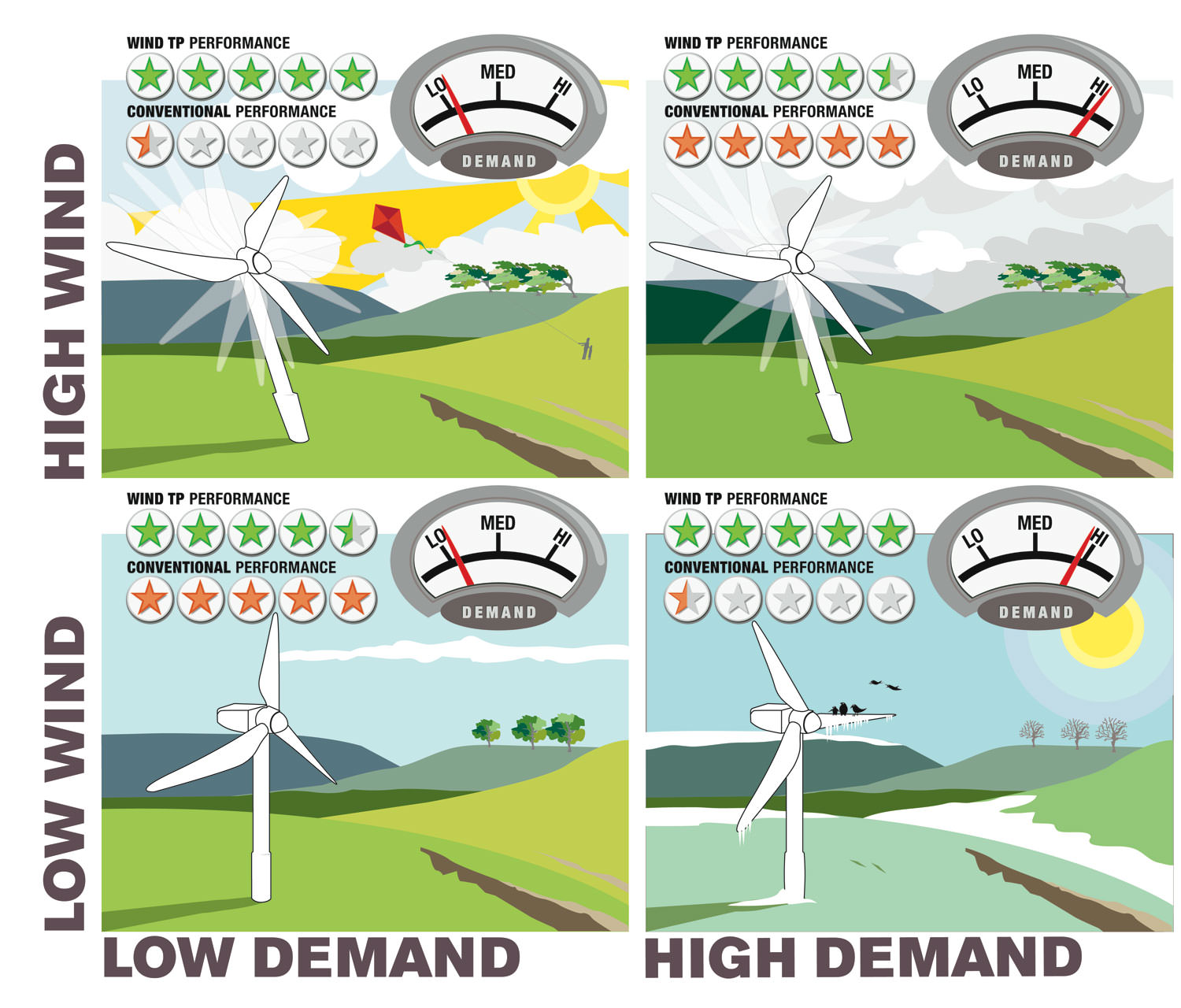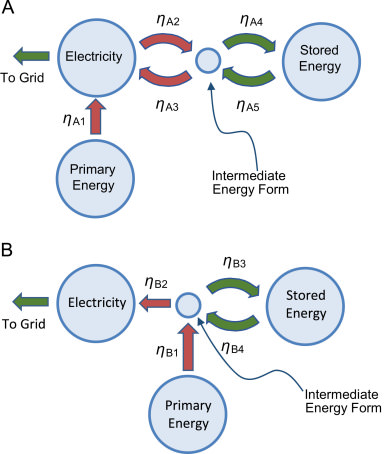Dispatchability is the key
WindTP transforms a wind farm into a flexible generation facility that can generate electricity when demand is high and not generate electricity when the demand is low – even though the profile of wind resource providing the power does not match the electricity demand profile. It achieves this using energy storage. In essence, WindTP does almost exactly the same thing as putting a huge battery alongside the wind farm would – except that the marginal capital costs are <1% of what the battery would cost and the lifetime is much longer.
Conventional wind and dispatchability
Conventional wind turbine power transmission arrangements have some capability to provide some services similar to energy storage. They can (and do) store some energy that can be adjusted by allowing small changes to rotor speed. This can be very useful for very short-time (<5s) variations in power but cannot serve beyond that. For control over longer timescales, wind turbine output can be turned down – pitching the blades so that they collect less energy from the wind than they are capable of. Turning down a wind turbine is “flexibility” in one sense but (a) this is very limited because you can never “turn up” and (b) the more use you make of this “flexibility” the more that cost per kWh of output energy increases. Note that if you turn down 50% of the output from a wind farm, the cost per kWh of output has been doubled.
Generation Integrated Energy Storage
WindTP is one member of a set of technologies collectively referred to as GIES – Generation Integrated Energy Storage. All of the technologies in this set combine energy storage with net generation so that they export much more electricity than they import and the timing of electricity import/export is highly flexible. You can download a paper about GIES systems here.
The classic example of a GIES system is natural hydro power like the Itaipu hydroelectric scheme on the Brazil/Paraguay border or the Three Gorges dam on the Yangtze in China. These systems import no electricity. They generate electricity according to demand and their energy store is stocked-up by rainfall. Importantly, the energy storage takes place before energy is converted to electricity. All of the GIES systems share two strong advantages: (i) The marginal cost of power-conversion equipment for passing energy through storage is extremely low (zero in the case of natural hydro power) (ii) The additional losses of energy incurred by holding energy in storage are extremely low (zero in the case of natural hydro power).
WindTP makes a wind farm behave a bit like a natural hydro power plant. It makes electricity on demand provided that there is either sufficient input resource (wind) at the time or sufficient energy in store. It charges up its store when the wind resource exceeds electrical demand for that wind farm. The reason to consider WindTP in place of a conventional wind turbine transmission system in any one location is clarified easily through this question:
Value of WindTP energy
Over the lifetime of a windfarm in this location, what will be the average ratio between the value of dispatchable energy and energy that simply arrives when the wind blows?
If the answer to this question is more than 1.25, then it is certainly appropriate to use WindTP in that location. It seems very probable in many locations that this ratio could be much larger.


